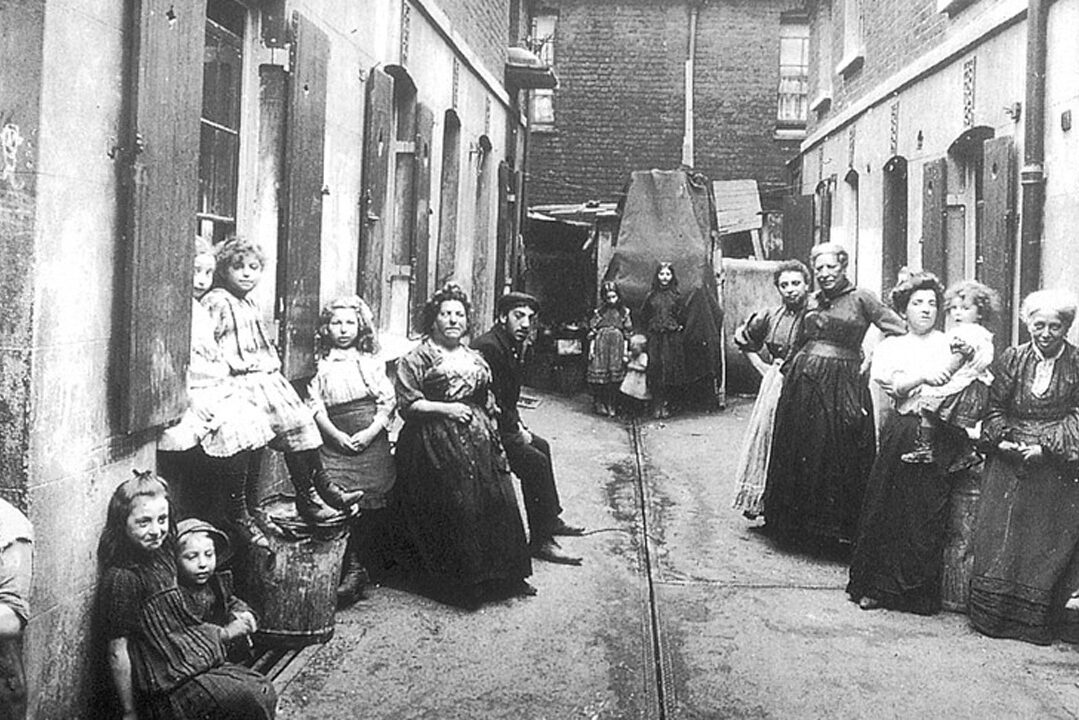Except taken from ‘Naming Jack the Ripper’ by Russell Edwards
It is just another phase: the East End has been through so many incarnations over the centuries. But the most interesting time to me is the 1880s, the era that spawned the Ripper Murders. In those times the neighbourhoods of Whitechapel and Spitalfields, as well as nearby districts like Bethnal Green, St George in the East and Poplar, had some of the most scandalously poor living conditions in London. The East End was, in parts, a vast, dirty, overcrowded slum, struggling to cope with the sheer number of people choosing to live there.
Much of this was down to the fact that it was home to many of the so-called ‘stink industries’, such as breweries, slaughterhouses and sugar refineries, which had attracted many migrant workers to the area during the industrial revolution. The City of London refused to allow such noxious trades within its walls, so instead they went to the outlying districts. This resulted in a polluted East End, dirty with soot and other industrial residue that blackened the walls of buildings and the
lungs of its inhabitants. Its proximity to the mighty Thames and the growing docks ensured that immigrants arriving in London would find their first point of entry in places like Wapping, Poplar and of course Whitechapel: the French Huguenots in the late seventeenth and eighteenth centuries (who built those amazing townhouses), the Irish fleeing the potato famine in the mid-1800s and, later, eastern European Jewish refugees. Th e Jewish incursion into the East End is vital
to the story of the Ripper, so let’s look at what caused it.
When, in March 1881, Tsar Alexander II of Russia was assassinated, there were unfounded rumours that the perpetrators were Jewish, and this led to a wave of maltreatment and persecution against the Jews in Eastern Europe, known as ‘pogroms’ (the word comes from Russian Yiddish, and means ‘destruction’). Thousands of Jewish Russians, Germans, Hungarians and, significantly, Poles, fled their homelands in the hope of setting up a newer and safer life elsewhere. One of the places they chose was London, the largest and most powerful city in the world at that time, and cheaper to reach than America, where many of them dreamed of settling.
The area of London outside the old walls of the City already had small Jewish communities and there were a number of synagogues which had been established for many years such as those at Duke’s Place, Aldgate and Bevis Marks at the edge of the East End. Although the Jewish community already living there tried to discourage immigration because of the lack of housing and jobs – even advertising in newspapers in Russia and Poland telling Jews not to come – the dire conditions in Eastern Europe left no choice. However difficult life in the slums of the East End was, it was better than the constant threat to their lives in countries under Russian domination.
The influx was persistent and dramatic – by 1887, Whitechapel was home to 28,000 Jewish immigrants alone, amounting to almost half of the entire population of Jews in the East End. Ten per cent of the total East End population were eastern European, settling into culturally confined ‘ghettos’ and finding work where they could, mostly in sweated trades like tailoring. But it was not easy, for regular work was already difficult to come by, and the swelling population made unemployment a problem for many. The arrival of the Jewish immigrants caused resentment among the indigenous population and the smaller number of other immigrants who had long ago been assimilated into the fabric of the East End. The Jews, willing to work all hours for poor pay (out of necessity) were blamed
for pushing others out of the job market, for aggravating the precarious housing situation and for all the other ills of the area.
For centuries the East End had been a great melting pot, and until this massive flood of immigrants it had dealt well with incomers, but now it was stretched to breaking point, and anyone who could afford to move away did, leaving a population who were, by and large, scraping by. Survival was the key, food and lodging the most important aims. Typhoid, cholera and venereal disease were rife, and the area had the highest birth rate, the highest death rate and the lowest marriage rate in the whole of London.
Housing was the big problem. Whereas parts of Whitechapel and Spitalfi elds had once been prosperous and semi-rural, demand throughout the early to mid-1800s resulted in gardens being built over to provide accommodation, often only accessible from narrow alleyways and courts. Th ese squalid dead ends were the preserve of the desperately poor and the criminal element, who could use the anonymity of an enclosed passageway to hide from the law. Sanitary facilities were
appalling: for example, in one Spitalfields tenement near Brick Lane, sixteen families shared a single outside lavatory which did not seem to be cleaned regularly and which, shockingly, was next to the only source of running water for the inhabitants, a single water tap.
Children were born and brought up here, although 20 per cent of them failed to reach their first birthday. They worked to earn money as soon as they could, sweeping pavements, cleaning windows and scavenging food from the rubbish in the streets, until they were big enough to work in the ‘sweaters’ (sweat shops) doing tailoring and other work for long hours and very low pay. Some of them formed small bands of skilful pickpockets.
More prosperous Victorians never ventured to the area they nicknamed ‘the dustbin’. Th e writer Jack London called it ‘the Abyss’. When he went undercover to write about the poverty of the East End in 1902 he wrote of the filth and vermin, and that when rain fell ‘it was more like grease than water.






